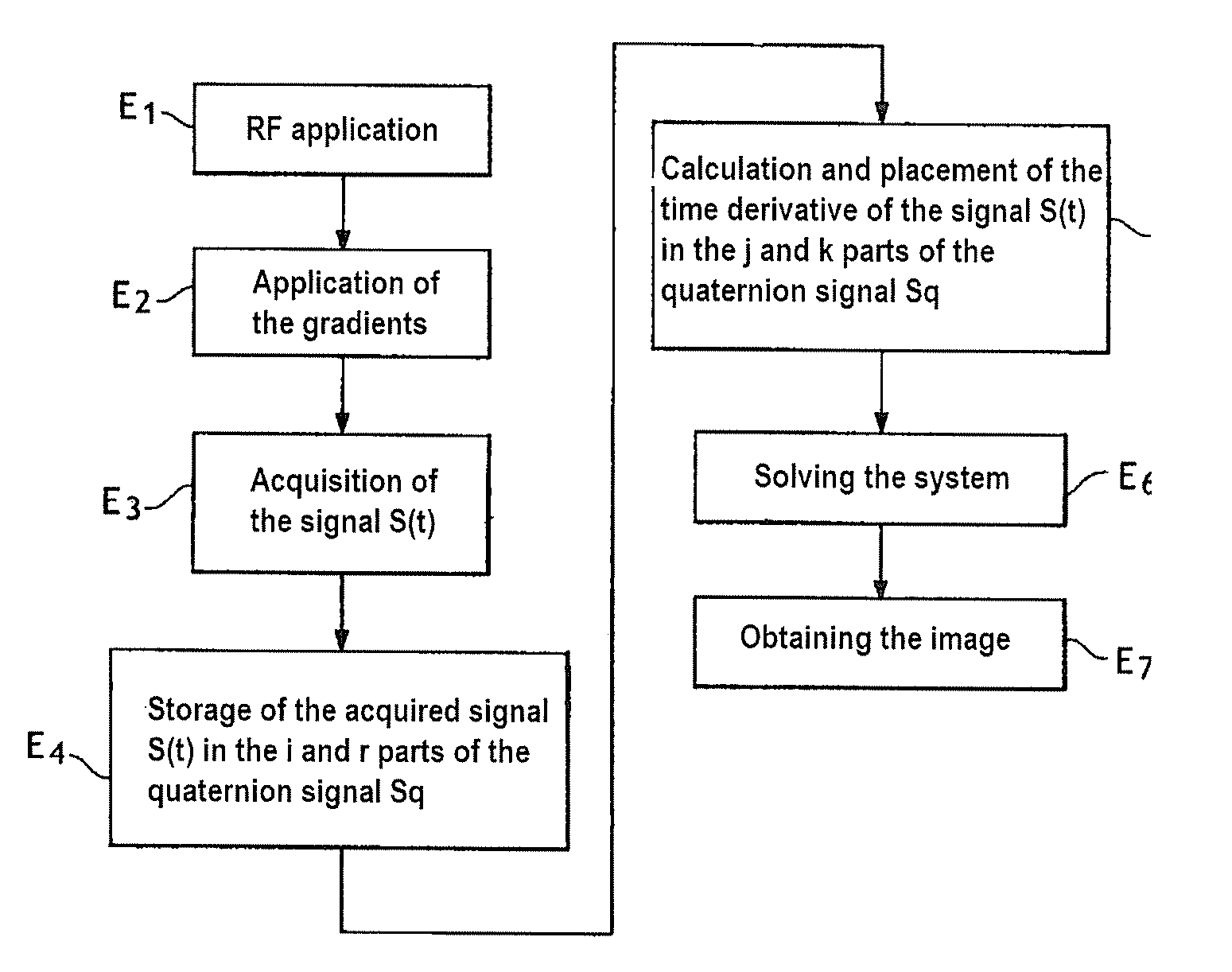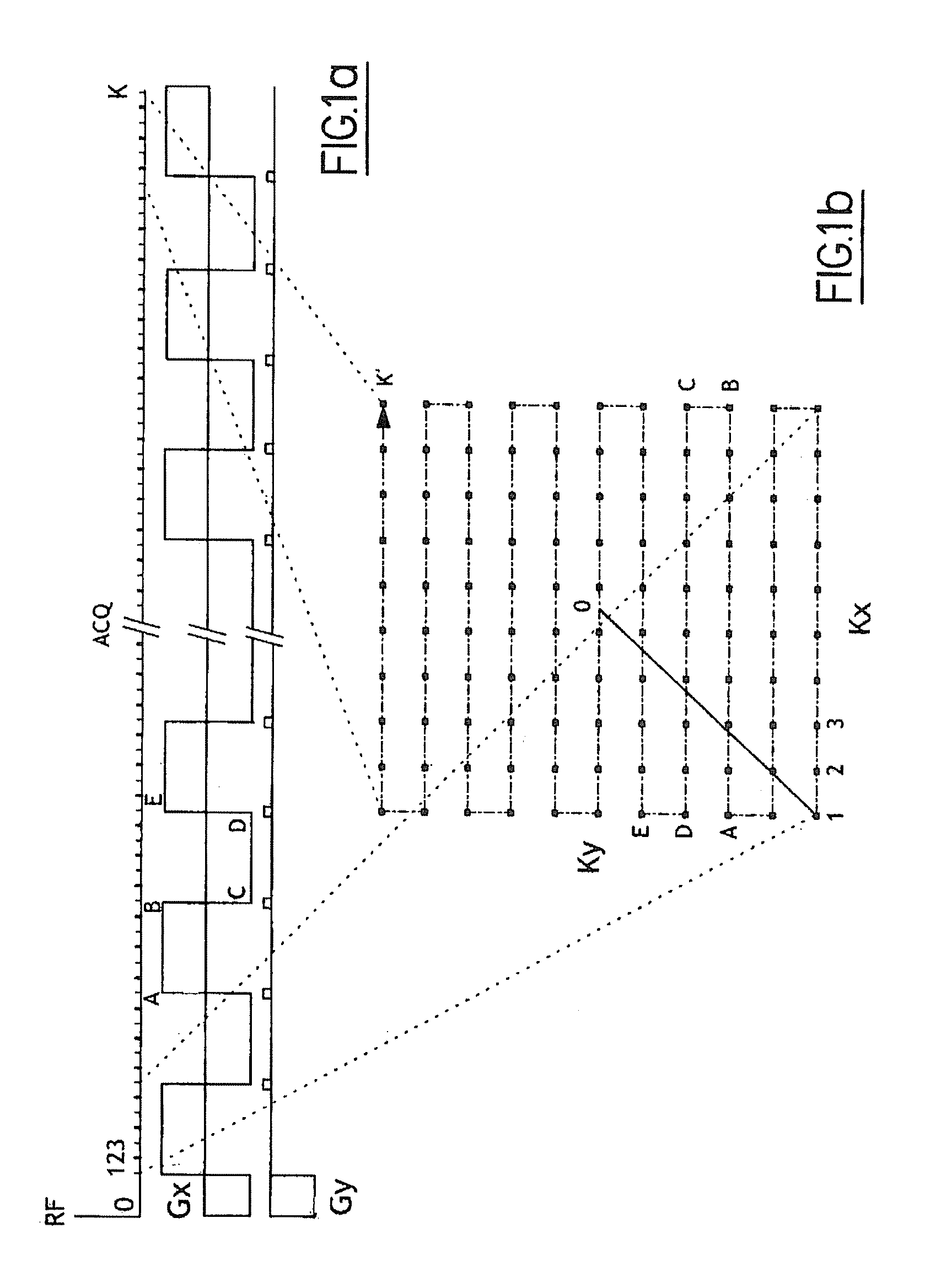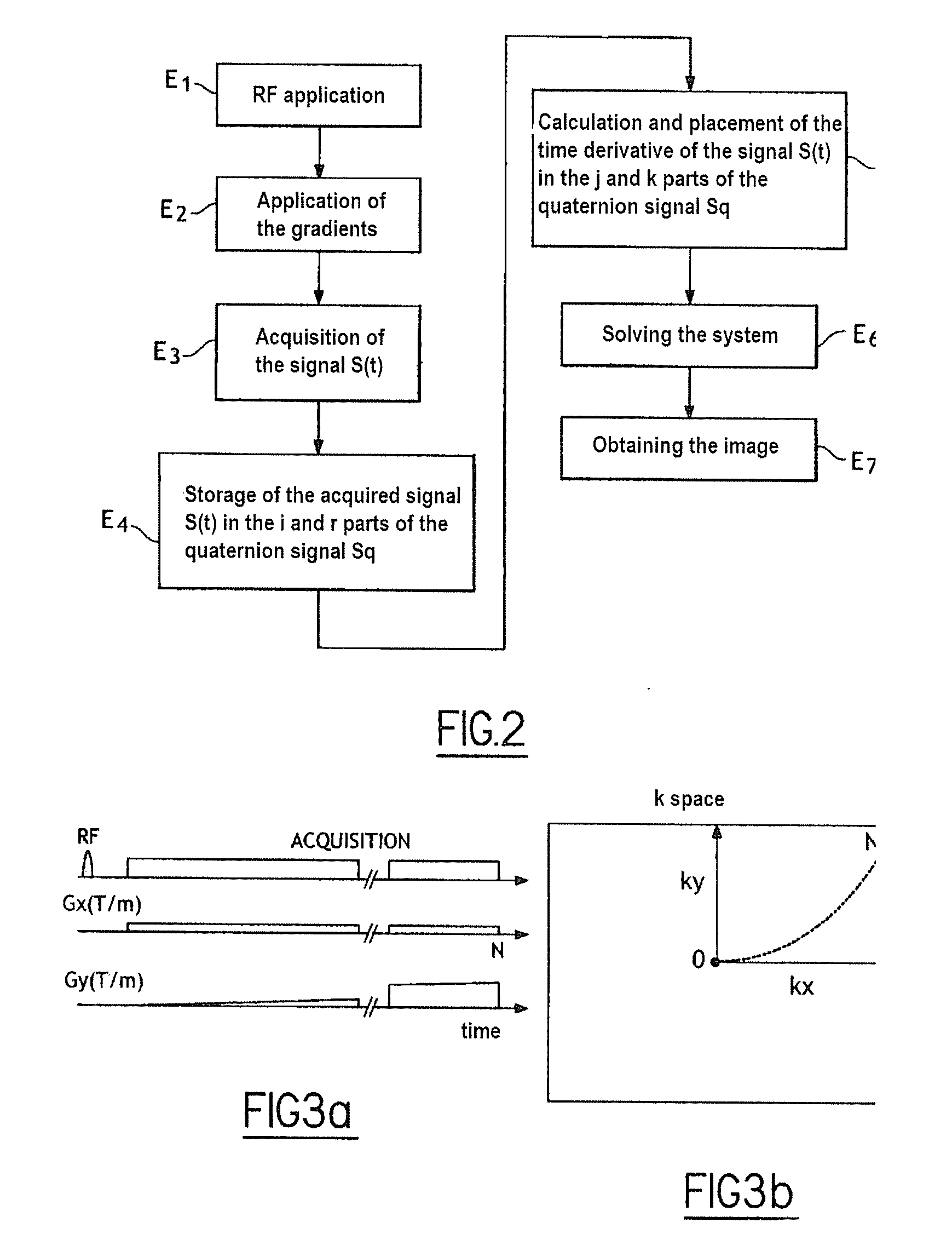MRI spatial encoding using hypercomplex numbers
a spatial encoding and hypercomplex technology, applied in the field of nuclear magnetic resonance, can solve the problems of harmful direct nerve stimulation, irreversible lesions of the eardrum, strong acoustic noise, etc., and achieve the effect of improving the space resolution of the nmr imag
- Summary
- Abstract
- Description
- Claims
- Application Information
AI Technical Summary
Benefits of technology
Problems solved by technology
Method used
Image
Examples
Embodiment Construction
[0054]FIG. 2 illustrates a flowchart of the method for acquiring an NMR signal using hypercomplex numbers with four dimensions, i.e. quaternions. Within the scope of the NMR application, an object to be coded is placed in a magnetic field. The case here is when it is sought to code the object according to two dimensions. In order to code this object as a time signal, a radiofrequency signal (RF) E1 is applied, which will be used for generating the observable magnetization and for scanning the two-dimensional space, E2 is applied along two dimensions, magnetic field gradients which will then modulate the characteristics of the magnetization (phase, rotational velocity, acceleration, . . . ) of each small differential element depending on its position.
[0055]FIG. 3b illustrates a scan of the k-space by applying the gradients of FIG. 3a. Along the direction x, a constant magnetic field gradient is applied: along this dimension, the rotational frequency of the magnetizations becomes a li...
PUM
 Login to View More
Login to View More Abstract
Description
Claims
Application Information
 Login to View More
Login to View More - R&D
- Intellectual Property
- Life Sciences
- Materials
- Tech Scout
- Unparalleled Data Quality
- Higher Quality Content
- 60% Fewer Hallucinations
Browse by: Latest US Patents, China's latest patents, Technical Efficacy Thesaurus, Application Domain, Technology Topic, Popular Technical Reports.
© 2025 PatSnap. All rights reserved.Legal|Privacy policy|Modern Slavery Act Transparency Statement|Sitemap|About US| Contact US: help@patsnap.com



